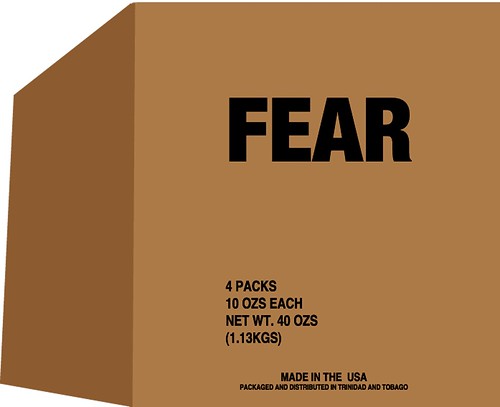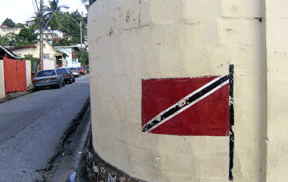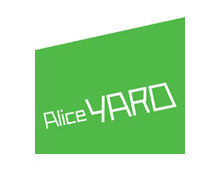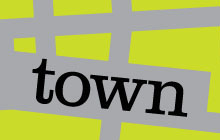Two voices in my head in the early 90s: David Rudder called himself the lyrics man but certainly Lloyd Best must be his literary equivalent, in terms of stretching the boundaries of language (our given and constructed ones) to grapple with giving shape to what we see and experience within the social landscape. Lloyd has generated many a linguistic hook to match many of David’s.
Like many Trinidadians, I knew Lloyd before he knew me. After work in the evenings, I used to visit a designer colleague, Eric Macallister, who was designing and pasting up the Tapia Newspaper on Cipriani Blvd. In those days, Lloyd was a robust man with a heavy commanding voice, wearing some kind of West African sarong under his T-shirt and or shirt-jac — but in local terms, it was a skirt! — and, of course, sandals to match. He was an intellectual. In the late 70s, this was not always a compliment — perhaps even today, in a place like Trinidad.
He always challenged you to have an opinion, or provoked questions. “What’s your opinion … or position?” As a "youth-man" then, I was always a bit circumspect about the Shirt-Jac Posse — I did not study at UWI, even though most of my family did.
Other shirt-jac men like Burrows, Coard and Burnham, or just ordinary territorial Civil Servants, were already playing themselves in the region or about to. But, to me, Lloyd represented the other camp, something different — something which shaped the way I used my first opportunity to vote in 1981, for example. I had developed a critical and an aware self and had become equally as weary of ribbons, flags and floating balloons.
When I returned to Trinidad from studying abroad, in 1989, Lloyd invited me to write for the Trinidad and Tobago Review. Again he was questioning and provoking me into public debate. A brief comment I had written and submitted about an artist doing something other than rendering birds, boats, shacks and tracks slipped through and was published in one of the dailies. Shortly afterwards, Lloyd called and offered me space to write about art in the Review. As I said, I did not really know him. He was the shirt-jac man I had seen in the papers and on TV while growing up — the person who had taught or influenced my father and older siblings at UWI. People began to ask me if I was a Tapia man — this was all very confusing to me.
The features editor at the daily newspaper called me in also, advising that my submission, which was just over 400 words or so, was too long, would take up too much space and needed simpler, more entertaining language that was more inclusive. I kept thinking to myself, How many people reading the papers then, or in a product T-shirt wriggling in the Oval, still, or even ever knew what a leg break was, or silly mid-off? Why was he picking on me?
Lloyd, unlike the rank and file operators within the various cultural territories or properties we have in Trinidad, never questioned my right to have a say or an opinion. I could never imagine Lloyd as just another appointed or aspiring estate policeman.
I proceeded, with his support and encouragement. He corrected my spelling and grammar but never encroached upon my point of view. I had permission to have and to express ideas! Of course, I was one of many. I wonder how, over the years, he maintained this optimism and commitment in a place like Trinidad and survived.
This is not characteristic of senior generations, in this Post-Post-Independence era. They mostly talk to each other about each other and their academic and/or pre-Independence (or early nation building) accomplishments, as well as the list of 70s disenchantments. One gets the impression that subsequent generations came into existence merely to listen. The world was already made. The sermon already scripted.
But many of us live in another space now, of trans-shipment empires, territories and arrangements, daily murders, kidnappings and the occasional Queen show. So, right before my eyes, as in a B-movie, The Good, The Bad and The Ugly had now transformed into The Greedy, the Anxious and the Desperate. The listeners in “house” began to shift in their seats, those in “pit” were out of their seats and out of patience, and “balcony” had bodyguards or had already left.
While other artists were questioning my entitlement to have opinions or threatening to break my fingers, the phone would ring every month and Annie or Lloyd would say “we are waiting on your piece — we cannot go to press”. The schoolmaster had called and homework had to be done. Sometimes I would be nervous to pick up the phone — was it an artist calling to cuss me for my last article, or was it Lloyd calling to keep me to my deadline? He was one of the most encouraging voices in my life then.
He made me feel normal for having ideas and for wanting to express them. I never assumed that he was interested in my artwork or agreed with my thoughts. It was the principle of providing a platform for ideas that concerned him most. So, by example and as a matter of principle, Lloyd was asking, Who gets permission to participate and to dream in this space that we have been in the process of constructing so far? What would be the best indicator that real democracy, or the prospect of it, was our business or concern? This was not the Trinidad I knew. How does he maintain this enthusiasm … this openness? Why is it so rare in the society today?
It was Lloyd who eventually introduced me to Annie Paul and David Scott in Jamaica, which lead me to become part of the Small Axe Collective. This has been one of the most fertile interactions for me as an artist living in the region.
The last thing I think of is a dream that I once had in the mid 90s, a time of much confusion in my life. It was Carnival, but in the past, near the Bleachers, where I saw mas in the 60s with my parents — it was Lloyd as a Gladiator! He was playing an individual. He had net, axe, leopard-skin coat, a Ken Morris breastplate, with a series of people, who I cannot recall, keeping his cape off the ground.
I was about to acknowledge him, but he held his hand up and said,that he could not recognize me — Who are you? What are you playing? Go home and get your costume and then we could talk! He said.
In other words … what’s your position?
Tuesday, April 18, 2006
New on the Market

I was thinking about "FEAR" Has it now replaced ethnic identity as a new political (even national) commodity? In its current 10 oz. packets, it can easily be distributed for consumption.
from my note book:
28/06/06
“Available at all leading stores!”
A collaboration with curator Andrea Fatona from “Reading the image: Poetics of the Black Diaspora” currently touring Canada.
Curator, Andrea Fatona calls from Toronto…she has seen another of my graphic works on my blog site. In this work, I am speculating about “fear “ as a new political commodity. People in Trinidad are supposed to be living in fear so we need a new government or new security measures to save us. They also say we need a renewal of moral and religious values! I keep asking myself – like the Nation who is selling this and why?
As usual someone told me that the work looked foreign and that that there was nothing distinctively Trinidadian about it…they said it looked generic.
The way I see it, these local concerns place me in a larger less anxious and competitive domain in which a kind of empathy can take shape between myself and others in other countries and cultures who are facing similar challenges and manipulations in the fast expanding global economy and social order. Maybe on islands people look inward and outward simultaneously.
So the curator and I begin to collaborate. We are imagining how this work will fit in to or shape her idea and if she can take the responsibility to make aesthetic choices in the implementation and placement of the work in the space and context. I decided that a simple rubber stamp made at an office store would do. This means that people entering the exhibition could make the stamp themselves on the little cardboard boxes.
To me this is exciting. It occurred to me that this is a collaboration not just between myself and the person that enters the show and gets to stamp the fear label on a box and take it home but also with Andrea. She gets to actually choose the boxes and order the stamp and have a say in how it will work. The work enables a number participants and I am more of an instigator than a sole maker “artist-man” in the old fashion sense.
In the early 90’s the term “ marketable historical injury “ kept coming up in my speculations about the use of identity. It was my final departure ( hopefully / optimistically ) from the territorial prospects ( but designations ) of multicultural politics and particularly now the reductivist political commodification of self and sensibility within local electoral politics and the lucrative postures of newspaper columnists. The seed of further distrust and by extension the marketability of fear and insecurity were coming on stream.
Saturday, April 08, 2006
Subscribe to:
Posts (Atom)



